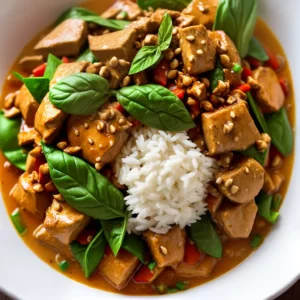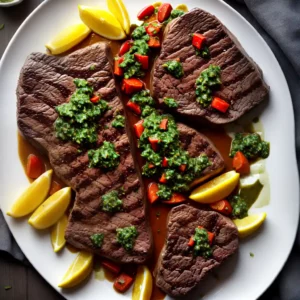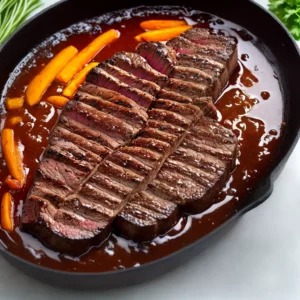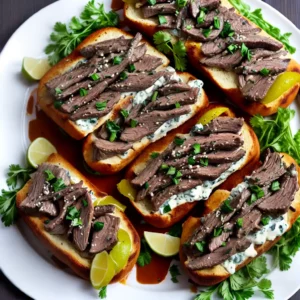How Many Cups Are in a Liter
If you’ve ever wondered how many cups are in a liter, you’ve come to the right place! In this measurement conversion guide, I’ll break down the math for you and provide accurate results.
Did you know that a liter is equivalent to approximately 4.227 cups? This conversion is incredibly useful when measuring ingredients in the kitchen. Whether you’re baking a cake, making a soup, or whipping up a refreshing drink, knowing how many cups are in a liter can make a big difference in the outcome of your recipe.
Cups and liters are both units of measurement used to determine the volume of liquids. When it comes to converting between these two units, it’s important to note that a liter is a metric measurement, while a cup is an Imperial measurement.
It’s fascinating to learn that the standardized measure of a cup is relatively new and was introduced by Fannie Farmer in 1896. Prior to this, recipes would often refer to measurements such as a handful or a generous portion. Farmer’s standardized cup measurement brought consistency and accuracy to recipes, making it easier for cooks and bakers to achieve consistent results.
In addition to providing the conversion from liters to cups, a handy conversion chart can also give you the conversions for other commonly used units of measurement, such as pints, quarts, and gallons. This chart can be a valuable resource in the kitchen, ensuring that you have the precise measurements you need for your culinary creations.
Converting liters to cups is a simple process. To get the equivalent volume in cups, you just need to multiply the number of liters by 4.22675. On the other hand, to convert cups to liters, you divide the number of cups by 4.22675. Using these formulas, you can easily convert between the two units of measurement with accuracy.
Having the right tools is essential for accurate measurement in the kitchen. Liquid and dry measuring cups are designed to provide precise measurements for liquids and dry ingredients, respectively. By using the appropriate measuring cups, you can ensure that your recipes turn out exactly as intended.
It’s also important to understand the differences between the Imperial and Metric systems of measurement. Different countries use different systems, so having a basic understanding of both can help you navigate recipes and measurements from around the world.
Key Takeaways – How Many Cups Are in a Liter:
- A liter is equal to approximately 4.227 cups, making it a valuable conversion to know for accurate recipe measurements.
- The standardized measure of a cup was introduced by Fannie Farmer in 1896.
- A conversion chart can provide not only the liter-to-cup conversion but also conversions for other commonly used units of measurement.
- To convert liters to cups, multiply the number of liters by 4.22675. To convert cups to liters, divide the number of cups by 4.22675.
- Using the appropriate liquid and dry measuring cups is essential for precise measurements in the kitchen.
Understanding the Metric System and Imperial Measurements
Before diving into the cup-to-liter conversion, let’s take a moment to understand the two systems of measurement involved – the metric system and Imperial measurements. These systems are used to measure various quantities, including volume, length, and weight.
The metric system is widely used around the world and is based on powers of ten. It provides a standardized and decimal-based approach to measurements. In the metric system, the liter is the unit of measurement for volume. It is equivalent to 1,000 cubic centimeters or 1 decimeter cubed. The metric system offers consistency and ease of conversion between different units within the system.
“The metric system offers consistency and ease of conversion between different units within the system.”
On the other hand, Imperial measurements are primarily used in the United States and a few other countries. The Imperial system, also known as the British Imperial System, originated from the British Empire and is based on historical units of measurement. In this system, volume is typically measured in cups, pints, quarts, and gallons. While the Imperial system is less standardized compared to the metric system, it is still widely used in everyday life, especially in recipes and cooking measurements.
To better visualize the cup-to-liter conversion, refer to the table below that outlines the conversion between cups and liters:
| Cups | Liters |
|---|---|
| 1 cup | 0.236 L |
| 2 cups | 0.473 L |
| 3 cups | 0.709 L |
| 4 cups (1 quart) | 0.946 L |
| 8 cups (1/2 gallon) | 1.892 L |
This table highlights some common conversions between cups and liters. Keep in mind that these are approximate values and may vary slightly depending on rounding. Having a good understanding of the metric system and Imperial measurements will help you navigate through various recipes and ensure accurate measurements in your cooking or baking endeavors.
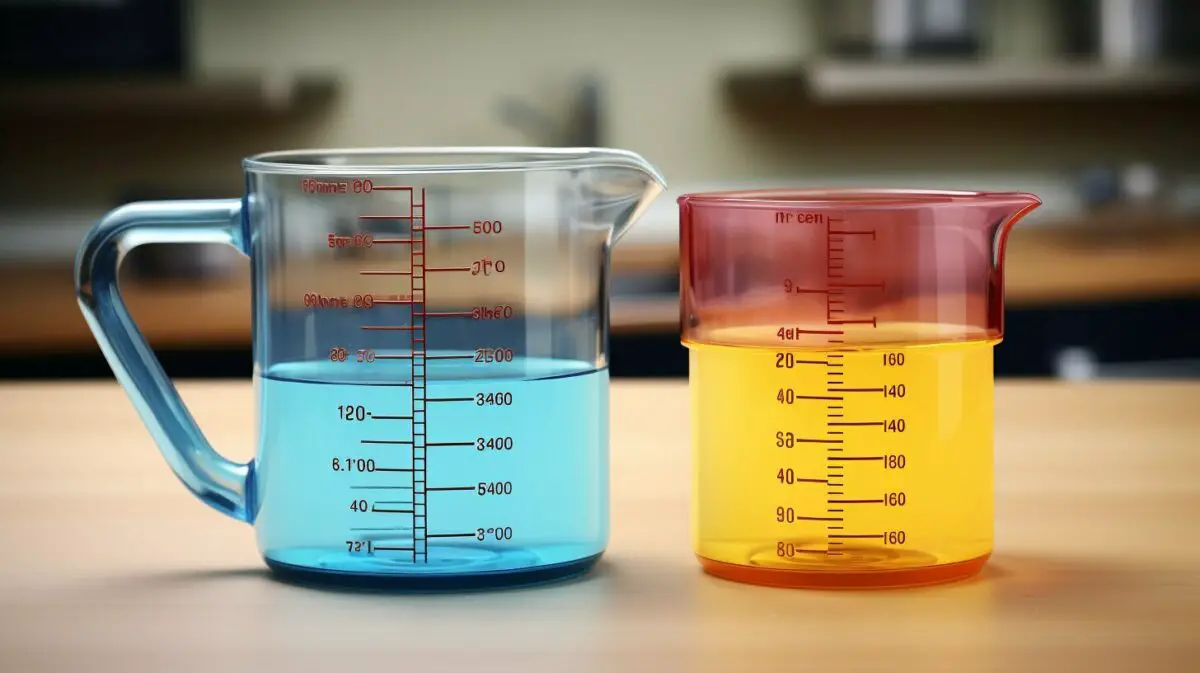
Cups and liters are both units of measurement used to quantify the volume of liquids in cooking and other applications. Understanding the concept of volume is fundamental when it comes to accurately measuring ingredients for recipes. Whether you are preparing a delicious soup, baking a cake, or mixing a refreshing drink, knowing how many cups are in a liter is essential for achieving the desired results.
In the Imperial system, which is commonly used in the United States, a cup is equivalent to approximately 236.59 milliliters. On the other hand, the metric system uses the liter as a standard unit of measurement for volume, with 1 liter equaling 1000 milliliters. To put it simply, there are about 4.23 cups in a liter.
To convert between cups and liters, there is a simple formula that you can use. If you want to convert liters to cups, you can multiply the number of liters by 4.23. For example, if you have 2 liters of water, you would multiply 2 by 4.23 to find that it is equivalent to approximately 8.46 cups. On the other hand, if you have 5 cups of milk and want to convert it to liters, you would divide 5 by 4.23 to get approximately 1.18 liters.
| Cups | Liters |
|---|---|
| 1 | 0.2366 |
| 2 | 0.4732 |
| 3 | 0.7098 |
| 4 | 0.9464 |
| 5 | 1.183 |
Having the right tools for accurate measurement is crucial when working with cups and liters. Liquid measuring cups are specifically designed to provide precise measurements for liquids, with markings that indicate different volume levels. To ensure accuracy, it is important to use the correct type of measuring cup for the specific liquid being measured. Additionally, dry measuring cups should be used for ingredients like flour and sugar, which are measured by volume rather than weight.
Understanding the differences between the Imperial and Metric systems of measurement is also important. While the United States primarily uses the Imperial system, many other countries around the world rely on the metric system. Being familiar with both systems can be beneficial when following recipes from different sources or communicating with individuals from different countries.
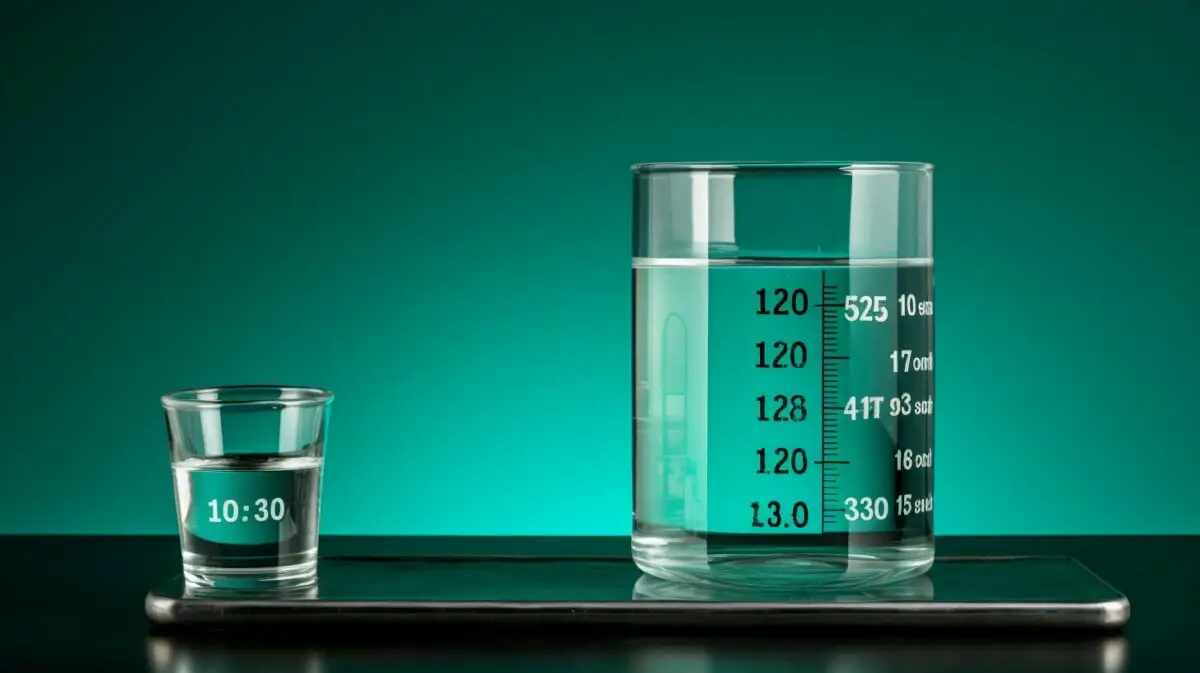
The standardized measure of a cup, as we know it today, was introduced by Fannie Farmer in 1896 and has become the widely accepted unit of measurement in recipes. Prior to the standardized cup, recipes often used vague measurements like a handful or a generous portion, which made it difficult to achieve consistent results in cooking and baking. Farmer, a renowned American culinary expert, recognized the need for a more precise and standardized method of measuring ingredients. She developed a specific measurement for the cup, which allowed home cooks and professional chefs alike to follow recipes with accuracy.
Since its inception, the standardized cup measurement has had a significant impact on culinary practices. It provides a consistent and reliable way to measure ingredients, ensuring that recipes can be replicated successfully each time. Whether you’re baking a cake, making a sauce, or preparing a beverage, using the standardized cup measurement helps maintain consistency and eliminates guesswork.
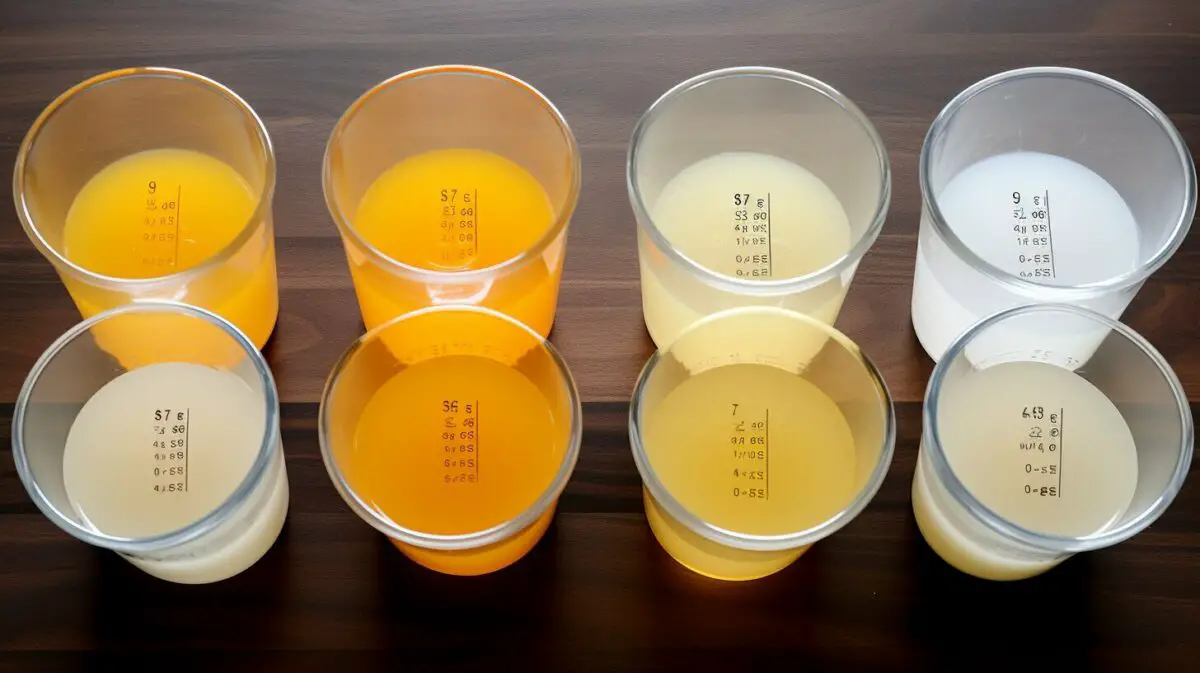
“The standardized cup measurement has revolutionized the way we approach cooking and baking. It has made recipes more accessible and reproducible, allowing home cooks to achieve professional-level results.”
With the standardized cup measurement, home cooks can confidently follow recipes without worrying about variations in portion sizes. This consistency is particularly important in baking, where precise measurements can make all the difference between a successful cake or a disappointing outcome. By adhering to the standardized cup measurement, cooking enthusiasts can create delicious dishes that are consistent in taste, texture, and quality.
Understanding the significance of the standardized cup measurement is essential for anyone who wants to excel in the kitchen. By embracing this widely accepted unit of measurement, you’ll be better equipped to follow recipes accurately and achieve the desired outcome in your culinary endeavors.
| Measurement | Equivalent in Cups |
|---|---|
| 1 Liter | 4.227 cups |
| 1 Cup | 0.236 liters |
| 1 Pint | 2 cups |
| 1 Quart | 4 cups |
| 1 Gallon | 16 cups |
Converting Liters to Cups
Converting liters to cups is a simple process that involves multiplying the number of liters by a conversion factor. Since 1 liter is equivalent to approximately 4.227 cups, you can easily calculate the number of cups by multiplying the liters by 4.227. For example, if you have 2 liters of liquid that you want to convert to cups, you would multiply 2 by 4.227, resulting in approximately 8.454 cups.
Using a conversion calculator can be helpful to ensure accuracy, especially when dealing with larger quantities. However, having a general understanding of the conversion factor allows you to quickly estimate the number of cups without relying on a calculator.
To help you visualize the conversion, here’s a handy table that provides conversions for common liter to cup measurements:
| Liters | Cups |
|---|---|
| 0.25 | 1.057 |
| 0.5 | 2.113 |
| 1 | 4.227 |
| 2 | 8.454 |
| 3 | 12.681 |
Keep in mind that these conversions are approximate and can vary slightly depending on the specific liquid being measured. Additionally, it’s always a good idea to double-check your measurements using the appropriate measuring cups to ensure accuracy in your recipes.
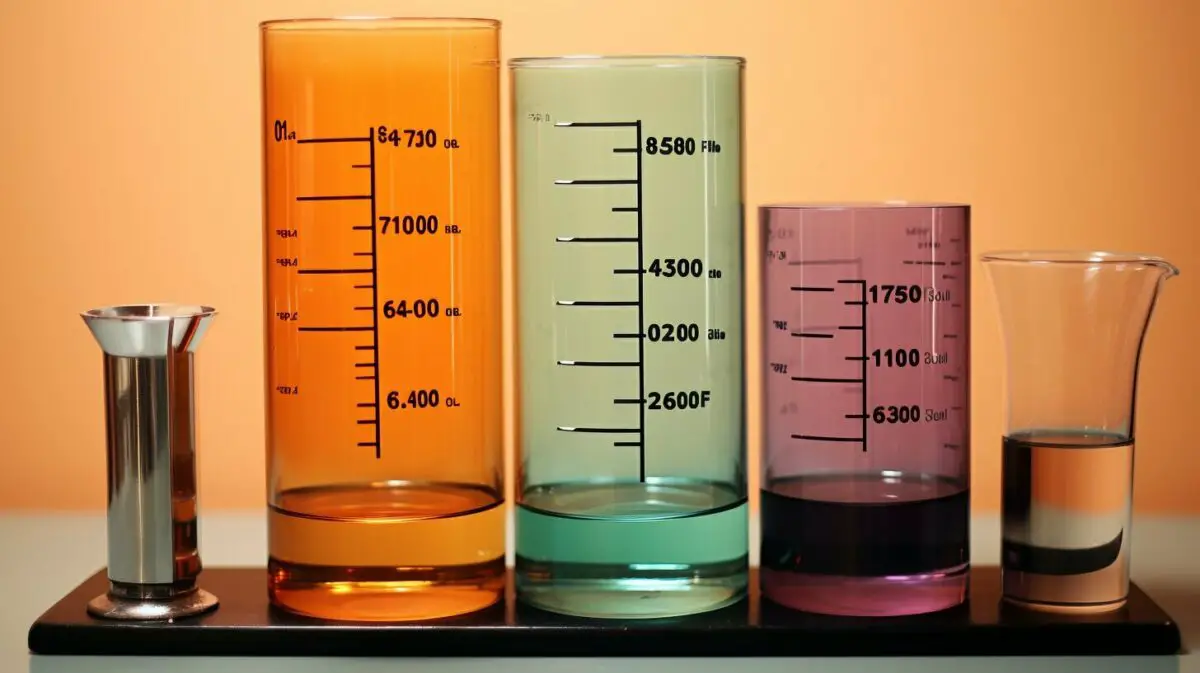
Accurate measurements are crucial in cooking as they directly affect the taste and texture of your dishes. Whether you’re baking a cake or making a savory sauce, using the correct amount of ingredients can make a significant difference in the final result. Inaccurate measurements can lead to over or under-seasoned dishes, inconsistent textures, and ultimately, disappointing outcomes.
By understanding the conversion between liters and cups, you can confidently follow recipes that use either unit of measurement. You’ll be able to adjust ingredient quantities as needed, ensuring the perfect balance of flavors and textures in your culinary creations. So the next time you’re in the kitchen, remember the simple conversion factor of multiplying liters by 4.227 to determine the corresponding number of cups.
Converting Cups to Liters
If you have a recipe that calls for cups and you need to know the equivalent amount in liters, the conversion process is straightforward. A cup is a widely used unit of measurement in cooking, but if you’re working with a recipe that uses liters, you’ll need to convert the measurement to ensure accuracy. Thankfully, converting cups to liters is a simple mathematical operation.
To convert cups to liters, you’ll need to use a conversion factor. The conversion factor for cups to liters is approximately 0.2366. This means that to convert cups to liters, you multiply the number of cups by 0.2366. For example, if you have 5 cups of liquid, the equivalent volume in liters would be 1.182 liters (5 x 0.2366).
It’s important to note that this conversion factor is an approximation, as the exact conversion from cups to liters is 0.2365882. However, for most practical purposes in the kitchen, the approximate conversion factor of 0.2366 is sufficient. Keep in mind that this conversion factor applies to liquid measurements, as converting dry ingredients may require different conversion factors.
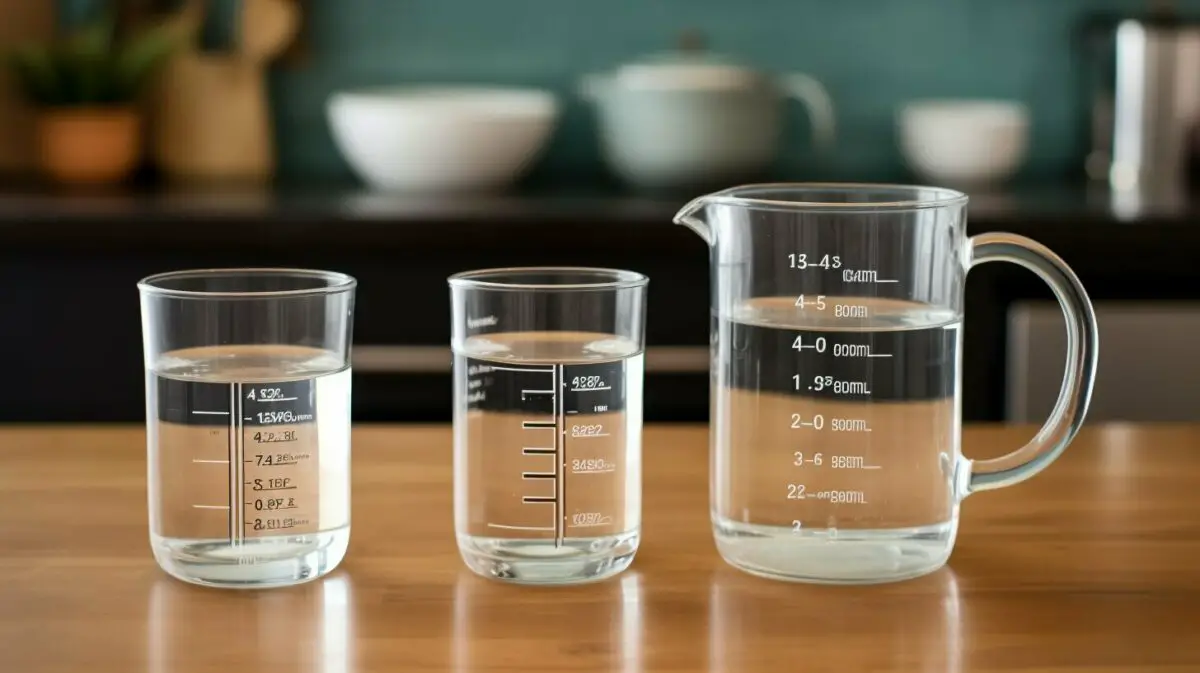
| Cups | Liters |
|---|---|
| 1 | 0.2366 |
| 2 | 0.4732 |
| 3 | 0.7098 |
| 4 | 0.9464 |
| 5 | 1.182 |
Now that you know how to convert cups to liters, you can confidently tackle any recipe that requires this conversion. Remember to use the correct conversion factor and consider any rounding necessary for practical purposes. With the right tools and knowledge, you’ll be able to measure ingredients accurately and create delicious dishes in no time!
The Versatility of the Conversion Chart
A conversion chart is a handy tool that allows you to quickly convert between different units of measurement, including liters, cups, pints, quarts, and gallons. It provides a convenient reference for cooks and bakers who need to convert recipes or adjust ingredient amounts. Whether you’re working with a recipe from another country or simply need to scale up or down the measurements, a conversion chart can be your best friend in the kitchen.
With a conversion chart, you can easily find the equivalent volume of a liter in cups, pints, quarts, and gallons. This makes it easier to follow recipes from any part of the world without having to guess or estimate the correct measurements. For example, if a recipe calls for 2 liters of water and you only have a measuring cup, you can simply consult the conversion chart to find that 2 liters is equivalent to approximately 8.45 cups. This ensures that you achieve accurate and consistent results in your cooking or baking.
Using a conversion chart also allows you to explore and experiment with different measurements and conversions. It opens up a world of culinary possibilities and gives you the confidence to try new recipes or create your own. Whether you’re doubling a recipe to feed a larger crowd or halving it for a smaller gathering, a conversion chart can guide you in adjusting the ingredient amounts accordingly.
| Measurement | Equivalent Value |
|---|---|
| Liter | 4.227 cups |
| Liter | 2.113 pints |
| Liter | 1.0567 quarts |
| Liter | 0.2642 gallons |
As you can see, a conversion chart provides a range of conversion options that go beyond just liters to cups. It helps you navigate various volume measurements, ensuring that you can work with ease and accuracy in the kitchen. So, the next time you’re faced with a recipe that uses unfamiliar units of measurement or requires conversions, refer to a conversion chart to make your cooking experience smoother and more enjoyable.
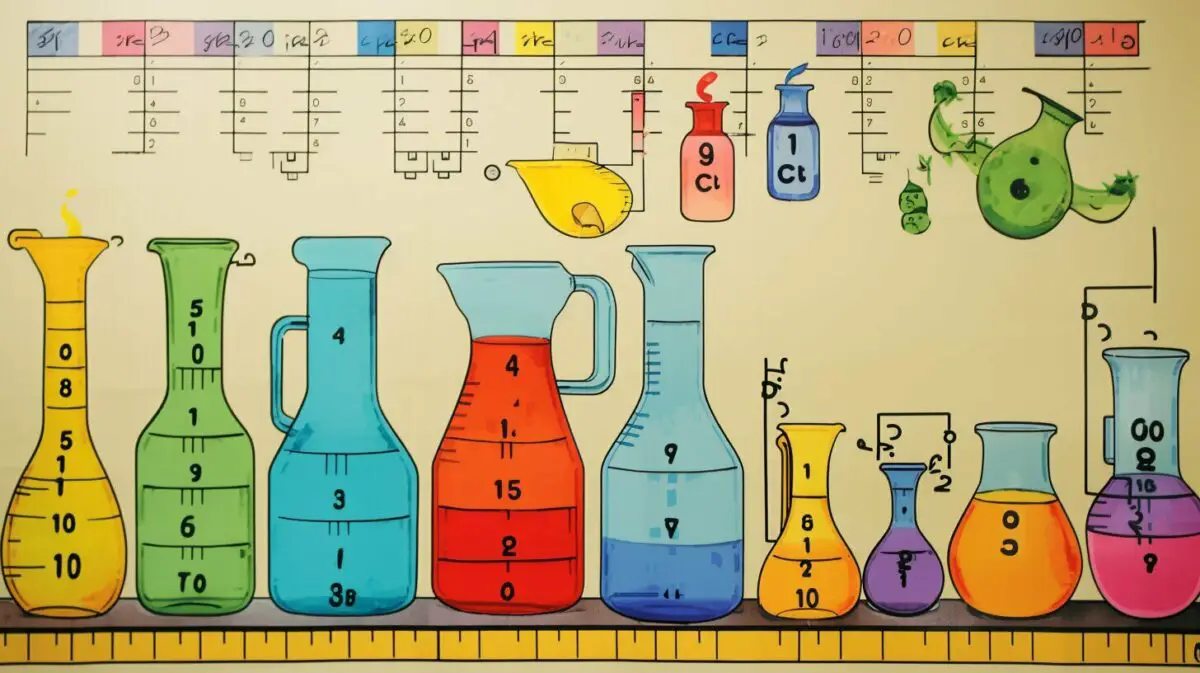
Accurate measurement of ingredients is crucial in cooking, and having the right tools, such as liquid and dry measuring cups, is essential. Whether you’re baking a cake or following a recipe for a savory dish, using the correct amount of each ingredient is key to achieving the desired taste and texture.
When it comes to measuring liquids, such as water, milk, or oil, liquid measuring cups are the go-to tool. These cups typically have a spout to facilitate pouring and a clear, graduated scale that allows you to accurately measure the desired volume. The most common liquid measuring cups come in sizes of 1 cup, 2 cups, and 4 cups, allowing you to measure smaller or larger quantities as needed.
On the other hand, dry measuring cups are perfect for measuring solid ingredients, such as flour, sugar, or spices. These cups usually come in a set of varying sizes, including 1/4 cup, 1/3 cup, 1/2 cup, and 1 cup. Dry measuring cups are designed to be filled to the brim, and a straight edge should be used to level off the excess for precise measurements.
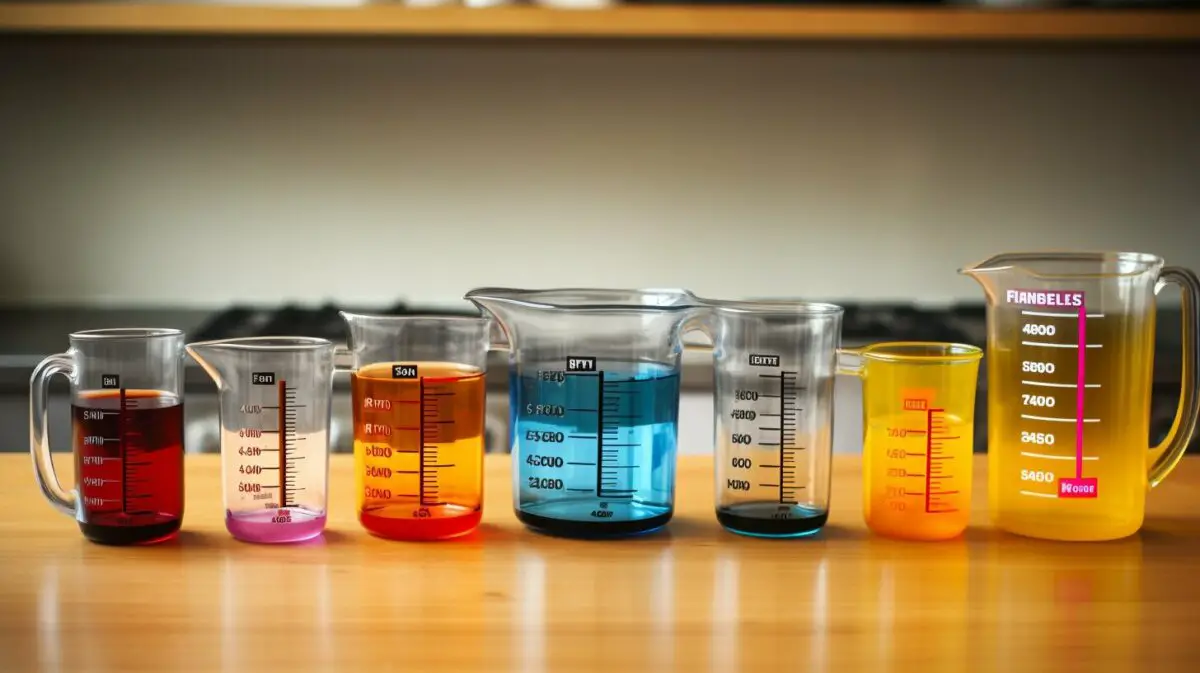
When selecting liquid and dry measuring cups, it is important to choose ones that are made of durable materials, such as glass or stainless steel, to ensure their accuracy and longevity. Additionally, opt for measuring cups with clear, easy-to-read measurement markings that won’t fade or wear off over time.
Remember to use the appropriate measuring cup for each ingredient. While liquid measuring cups are designed to accurately measure liquids, using them for dry ingredients can lead to inaccurate measurements. The same applies to dry measuring cups for liquids, which may result in imprecise measurements and affect the outcome of your recipe.
By using liquid and dry measuring cups properly, you’ll be able to achieve consistent results in your cooking and baking. The precise balance of ingredients will enhance the flavors and textures of your dishes, making every bite a delight.
Understanding the Metric and Imperial Systems
The Metric and Imperial systems of measurement may differ in their units and conventions, creating potential confusion for those accustomed to one system but not the other. While the Metric system is widely used around the world, the Imperial system is primarily used in the United States. Understanding the differences between these two systems is essential, especially when it comes to measurement conversions.
In the Metric system, the basic unit of volume is the liter, which is used to measure liquids. One liter is equivalent to 1000 milliliters or approximately 1.057 quarts. On the other hand, the Imperial system uses units such as cups, pints, quarts, and gallons to measure volume. A cup is equivalent to 8 fluid ounces or approximately 0.24 liters.
When converting between the Metric and Imperial systems, it’s important to note that the units do not have a direct one-to-one correspondence. For example, a liter is not exactly the same as a quart, and a cup is not exactly the same as a milliliter. Therefore, it is necessary to use conversion factors to accurately convert between the two systems.
Differences between Metric and Imperial Systems
| Metric System | Imperial System |
|---|---|
| Uses units such as liters, milliliters, and grams | Uses units such as cups, ounces, and pounds |
| Based on powers of 10 | Based on historical conventions |
| Primarily used worldwide | Primarily used in the United States |
Understanding the differences between the Metric and Imperial systems is crucial for accurate measurement conversions. Whether you’re a cook following a recipe from a different country or a traveler trying to navigate unfamiliar units, having knowledge of both systems will help you make precise conversions and prevent any mishaps in the kitchen or beyond.
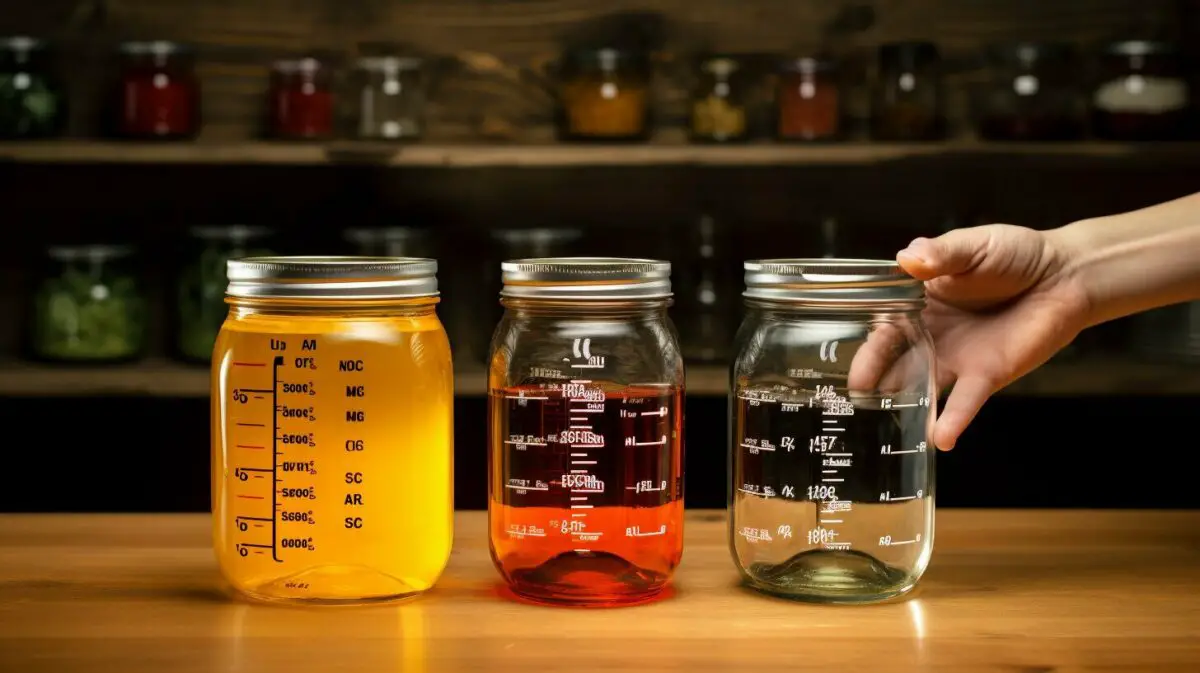
Cups and liters may be the most commonly known volume units, but there are other units you may encounter in recipes and everyday life. Let’s take a closer look at some of these units:
Cubic Centimeters (cc): Also known as milliliters (ml), cubic centimeters are frequently used to measure small quantities of liquids or medications. For example, a standard medicine dropper can hold approximately 5 cubic centimeters or 5 milliliters of liquid.
Deciliters (dl): Deciliters are larger than milliliters and are often used in European recipes. One deciliter is equal to 100 milliliters or approximately 0.42 cups. This unit is useful when you need to measure larger amounts of liquids, such as when making sauces or dressings.
Fluid Ounces (fl oz): Fluid ounces are commonly used in the United States and are equivalent to approximately 29.57 milliliters. They are often used to measure liquids in recipes and are found on most measuring cups. It’s important to note that fluid ounces and ounces (weight) are different measurements, so be sure to use the correct unit when following a recipe.
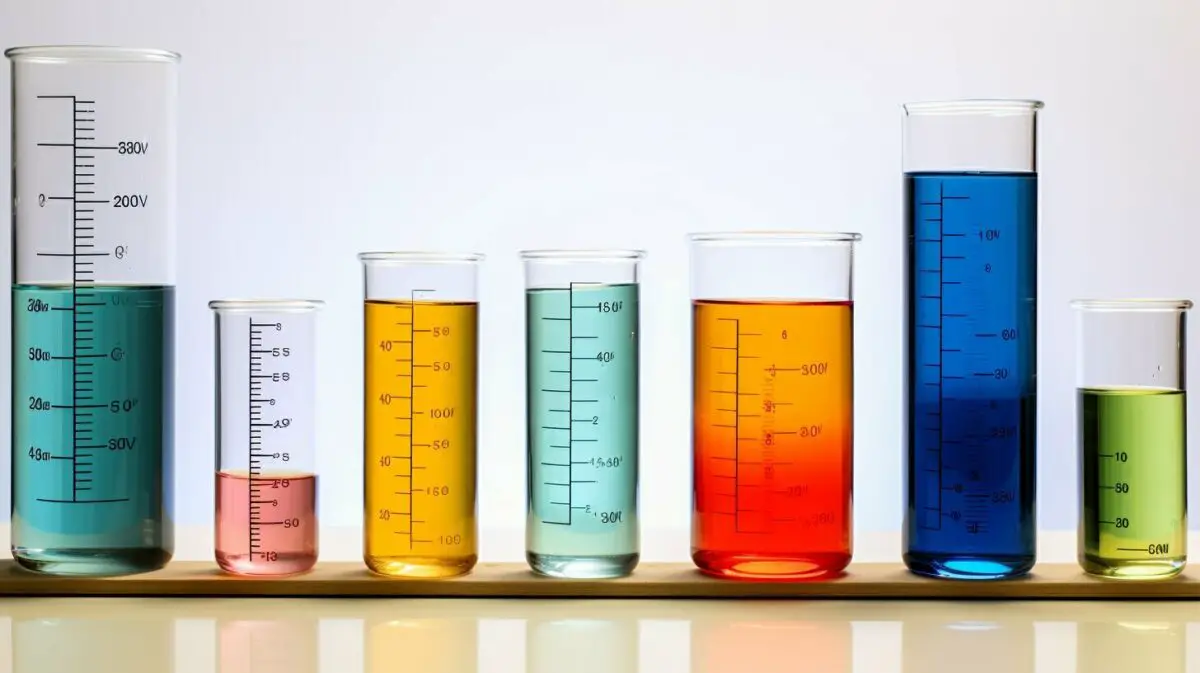
Understanding these different volume units can be helpful when following recipes from different regions or when you come across unfamiliar measurements. Having a solid grasp of these units will allow you to accurately measure ingredients and achieve the desired results in your cooking and baking endeavors.
| Common Volume Units | Equivalent |
|---|---|
| Cubic Centimeters (cc) or Milliliters (ml) | 1 cc = 1 ml |
| Deciliters (dl) | 1 dl = 100 ml = 0.42 cups |
| Fluid Ounces (fl oz) | 1 fl oz = 29.57 ml |
Common Liquids and Their Volume in Liters
To better understand the conversion from liters to cups, let’s look at the approximate volume of common liquids in liters. Knowing how much liquid is in a liter can help when following a recipe or measuring ingredients accurately.
In the kitchen, water is a staple ingredient that we often need to measure. One liter of water is approximately equivalent to 4.227 cups. This means that if a recipe calls for one liter of water, you would need a little over four cups to match that volume. It’s important to note that this conversion applies to other liquids as well, such as milk, juice, soda, wine, liquor, and oil.
For example, if a recipe calls for half a liter of milk, you would need around 2.113 cups. Similarly, if you need to measure out one liter of juice or soda, you would require about 4.227 cups. When it comes to wine or liquor, one liter would be approximately 4.227 cups as well. Finally, for oil, one liter is equivalent to about 4.227 cups.
| Liquid | Volume in Liters | Approximate Volume in Cups |
|---|---|---|
| Water | 1 liter | 4.227 cups |
| Milk | 0.5 liters | 2.113 cups |
| Juice/Soda | 1 liter | 4.227 cups |
| Wine/Liquor | 1 liter | 4.227 cups |
| Oil | 1 liter | 4.227 cups |
By having a general idea of the volume of common liquids in liters, you can easily make conversions between cups and liters in your kitchen. Whether you are following a recipe or experimenting with your own creations, accurate measurements are essential for achieving the desired results. Remember, a liter is approximately 4.227 cups, providing a reliable measurement for various liquid ingredients.

Bottle sizes come in various measurements, and knowing their equivalent volume in liters can be useful for purchasing and using liquids for different purposes. Whether you’re stocking up on beverages for a party or measuring ingredients for a recipe, understanding the conversion between bottle sizes and liters can help you make accurate decisions.
Here is a table showcasing some common bottle sizes and their equivalent volumes in liters:
| Bottle Size | Equivalent Volume in Liters |
|---|---|
| Half Liter | 0.5 liters |
| One Liter | 1 liter |
| Two Liters | 2 liters |
| 0.25 Liters | 0.25 liters |
| 0.33 Liters | 0.33 liters |
| 0.75 Liters | 0.75 liters |
| 1.5 Liters | 1.5 liters |
| 3 Liters | 3 liters |
| 5 Liters | 5 liters |
| 10 Liters | 10 liters |
| 100 Milliliters | 0.1 liters |
| 500 Milliliters | 0.5 liters |
| 750 Milliliters | 0.75 liters |
| 1000 Milliliters | 1 liter |
As you can see from the table, bottle sizes can range from as small as 100 milliliters to as large as 10 liters. These measurements allow you to easily determine the volume of liquid contained in a specific bottle size, whether it’s water, soda, juice, or any other liquid you may need.
Understanding the equivalent volume in liters for common bottle sizes can save you time and effort when shopping or following a recipe. By knowing the conversion between bottle sizes and liters, you can accurately estimate how much liquid you need, ensuring you have enough for your intended purpose.

Having this knowledge can also help you compare prices and quantities when making purchasing decisions. Whether you’re deciding between two different-sized bottles or trying to determine the most cost-effective option, understanding the equivalent volume in liters can be a valuable tool.
Understanding Ratios and Factors in Measurement Conversion
Converting between cups and liters involves understanding the ratios and factors that relate these two units of measurement. By grasping these concepts, you can accurately convert measurements in your kitchen and ensure precise quantities in your recipes. Ratios express the relationship between two quantities, while factors are the numbers we use to convert between different units of measurement.
When converting liters to cups, the ratio is 1 liter to approximately 4.227 cups. To calculate the conversion, you multiply the number of liters by the factor 4.227. For example, if you have 2 liters of liquid that you want to convert to cups, you would multiply 2 by 4.227, resulting in approximately 8.454 cups.
On the other hand, when converting cups to liters, the ratio is 1 cup to 0.2366 liters. To convert from cups to liters, you divide the number of cups by the factor 4.227. For instance, if you have 6 cups of liquid that you want to convert to liters, you would divide 6 by 4.227, resulting in approximately 1.418 liters.
Understanding the ratios and factors involved in cup-to-liter conversions allows you to accurately measure and adapt recipes according to your needs. By being aware of these principles, you can confidently navigate between different units of measurement and ensure successful culinary creations in your kitchen.
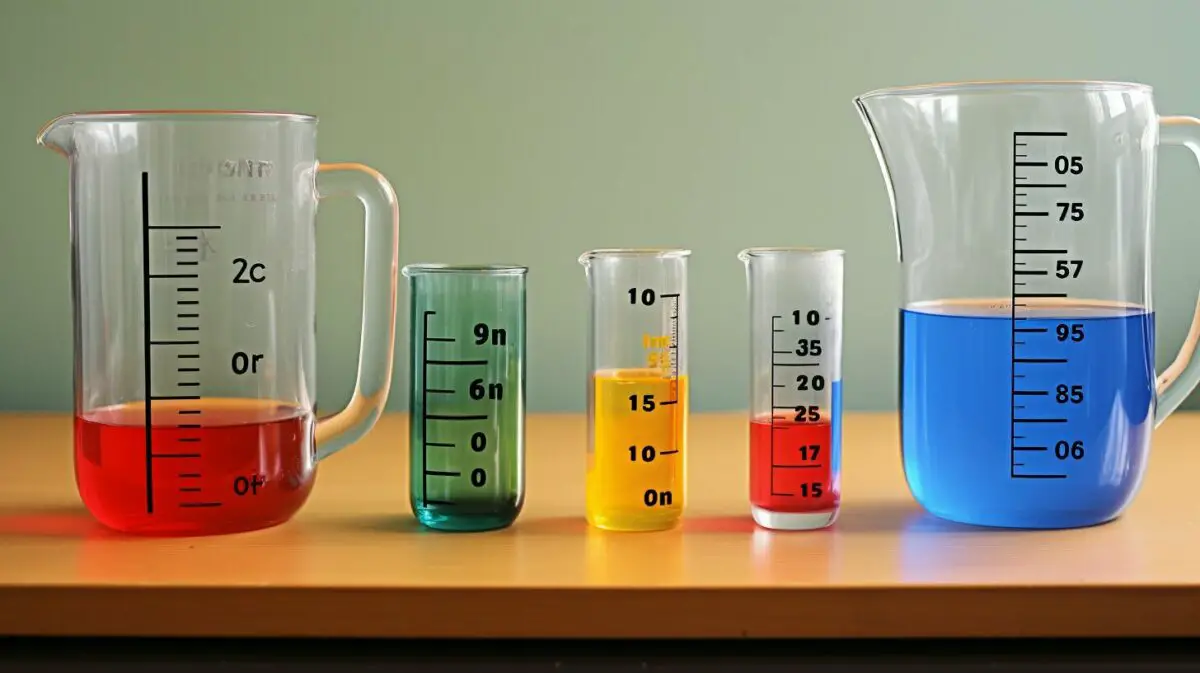
| Cups | Liters |
|---|---|
| 1 | 0.2366 |
| 2 | 0.4732 |
| 3 | 0.7098 |
| 4 | 0.9464 |
By referring to the conversion factors in the table above, you can easily convert between cups and liters with precision. Simply locate the desired quantity in cups and find its equivalent value in liters. This table serves as a handy reference tool in your culinary endeavors.
Using a Conversion Calculator
If you don’t want to calculate the conversion manually, a conversion calculator can come in handy for quickly obtaining accurate results. These online tools are designed to make your life easier in the kitchen by providing instant conversions between cups and liters.
Simply enter the value in either cups or liters, and the conversion calculator will do the math for you. It’s a convenient way to ensure that you’re using the correct measurements in your recipes without the hassle of manual calculations.
Not only can a conversion calculator save you time and effort, but it can also help you avoid any potential errors in your measurements. This is especially important when dealing with precise recipes that require exact measurements for optimal results.
Whether you’re a professional chef or a home cook, having a conversion calculator at your fingertips can greatly simplify the process of converting between cups and liters. So next time you need to know how many cups are in a liter, let the conversion calculator do the work for you.

Accurate measurements are crucial in cooking, as they ensure the right balance of flavors and textures in your dishes. Whether you’re following a recipe or experimenting with your own creations, precise measurements can make a significant difference in the final outcome. Using too much or too little of an ingredient can throw off the taste, consistency, and overall presentation of your dish.
When it comes to cooking, precision is key. Imagine adding too much salt to a soup or not enough sugar to a cake. The results can be disappointing, leaving your dish either too salty or lacking sweetness. Accurate measurements help you achieve the intended flavor profile and ensure consistent results every time you cook.
In addition to taste, accurate measurements affect the texture of your dishes. Baking, for example, is a science that relies heavily on precise measurements. Too much flour can result in dense and dry cakes, while too little can lead to a flat and gooey texture. By carefully measuring your ingredients, you can achieve the perfect balance and enjoy light and fluffy cakes, tender cookies, and moist breads.
| Ingredient | Measurement | Conversion |
|---|---|---|
| Flour | 1 cup | 120 grams |
| Sugar | 1 teaspoon | 4 grams |
| Salt | 1/2 teaspoon | 3 grams |
| Baking Powder | 1 teaspoon | 5 grams |
Accurate measurements also play a vital role in consistency. If you find a recipe you love, precise measurements ensure that you can recreate that dish exactly the same way each time. This is particularly important if you’re cooking for others or if you’re participating in a cooking competition where consistency is key.
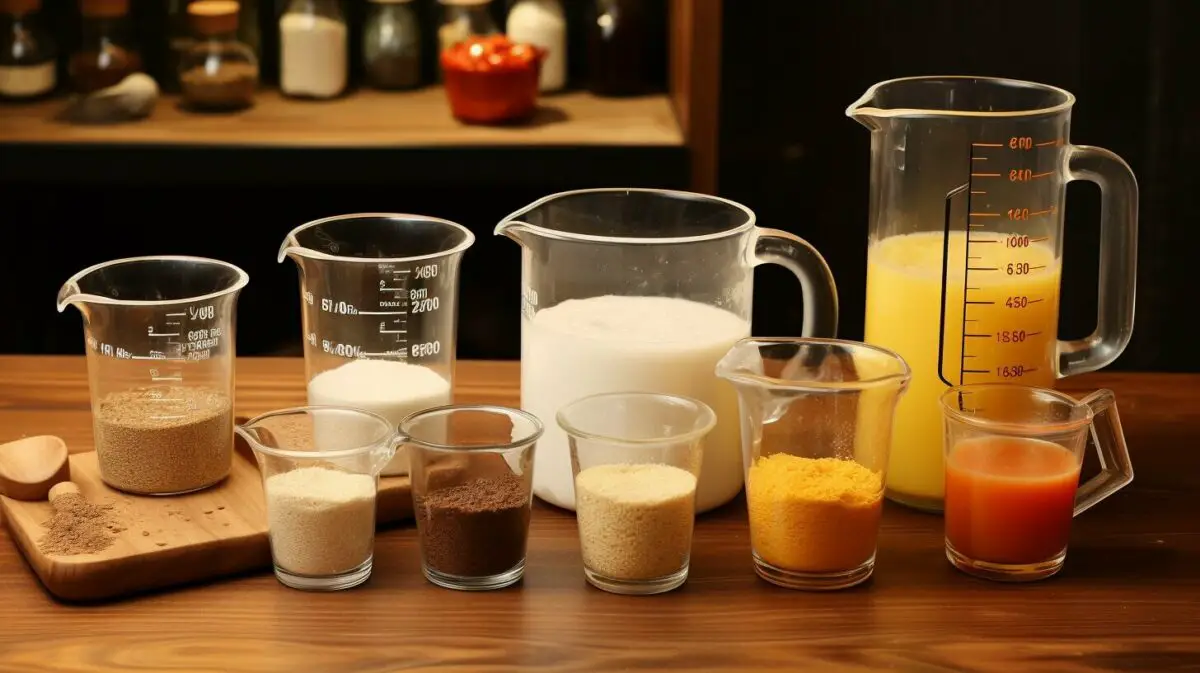
So, the next time you step into the kitchen, remember the importance of accurate measurements. Use the right measuring tools, follow the recipe instructions diligently, and pay attention to the details. By doing so, you can elevate your culinary skills and create delicious dishes that will wow your family and friends.
Conclusion – How Many Cups Are in a Liter
Understanding the conversion between cups and liters allows you to confidently navigate recipes and accurately measure ingredients in your culinary adventures. A liter is equivalent to approximately 4.227 cups, making it a useful conversion when working in the kitchen. Whether you’re measuring water, oil, soda, or any other liquid, you can rely on the fact that there are about 4.3 cups in a liter.
It’s important to note that cups and liters are different units of volume measurement. Cups are part of the Imperial system, while liters belong to the Metric system. The standardized cup measurement we use today was introduced by Fannie Farmer in 1896, giving recipes a more precise and consistent measurement. Before that, terms like “handful” or “generous portion” were commonly used.
When converting between liters and cups, the process is relatively simple. To convert liters to cups, you multiply the number of liters by 4.22675, which will give you the equivalent volume in cups. Conversely, to convert cups to liters, you divide the number of cups by 4.22675. This conversion is made easier with the help of a conversion chart, which not only provides the liter-to-cup conversion but also other common volume units like pints, quarts, and gallons.
In order to accurately measure ingredients, it’s essential to have the right tools. Liquid and dry measuring cups are designed to provide precise measurements for liquids and dry ingredients respectively. By using these tools, you can ensure that your culinary creations turn out as intended.
Lastly, understanding the differences between the Imperial and Metric systems of measurement is important, as different countries use different systems. Being familiar with these variations will help you navigate recipes and measurements from around the world.
FAQ – How Many Cups Are in a Liter
Q: How many cups are in a liter?
A: There are approximately 4.3 cups in a liter.
Q: What is the difference between the metric system and Imperial measurements?
A: The metric system is a decimal-based system of measurement used worldwide, while Imperial measurements are based on historical English units.
Q: What are cups and liters used for?
A: Cups and liters are units of measurement used to measure the volume of liquids, commonly used in cooking and baking.
Q: When was the standardized cup measurement introduced?
A: The standardized cup measurement was introduced by Fannie Farmer in 1896.
Q: How do I convert liters to cups?
A: To convert liters to cups, multiply the number of liters by approximately 4.3.
Q: How do I convert cups to liters?
A: To convert cups to liters, divide the number of cups by approximately 4.3.
Q: Can I use a conversion chart for other volume units?
A: Yes, a conversion chart can provide conversions for other commonly used units of measurement like pints, quarts, and gallons.
Q: What tools do I need for accurate measurements?
A: Having liquid and dry measuring cups is essential for accurately measuring ingredients.
Q: What are the differences between the Metric and Imperial systems?
A: The Metric system is decimal-based and used internationally, while the Imperial system is a historical English measurement system still used in some countries.
Q: What are some other common volume units?
A: Other common volume units include cubic centimeters, deciliters, and fluid ounces.
Our Friends:
- https://www.100daysofrealfood.com/how-many-cups-in-a-liter/
- https://www.unitconverters.net/volume/liters-to-cups.htm
Related Recipes:
 How Many Cups Are in a Liter: Unlocking the Mystery
How Many Cups Are in a Liter: Unlocking the Mystery
 How Many Quarts in a Liter? (Perfect Measurement Conversion Guide)
How Many Quarts in a Liter? (Perfect Measurement Conversion Guide)
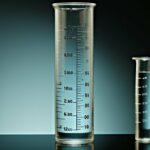 How Many Milliliters in a Liter? (Measurement Conversion Guide)
How Many Milliliters in a Liter? (Measurement Conversion Guide)
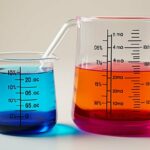 How Many Milliliters in an Ounce? (Perfect Measurement Conversion Guide)
How Many Milliliters in an Ounce? (Perfect Measurement Conversion Guide)
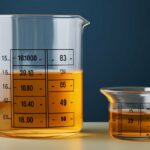 How Many Milliliters in a Quart? (Perfect Measurement Conversion Guide)
How Many Milliliters in a Quart? (Perfect Measurement Conversion Guide)
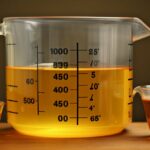 How Many Ounces Are in 750 ml? (Measurement Conversion Guide)
How Many Ounces Are in 750 ml? (Measurement Conversion Guide)
 How Many Cups Are in a Gallon? (Perfect Measurement Conversion Guide)
How Many Cups Are in a Gallon? (Perfect Measurement Conversion Guide)
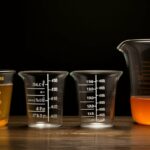 How Many Milliliters in a Pint? (Measurement Conversion Guide)
How Many Milliliters in a Pint? (Measurement Conversion Guide)


